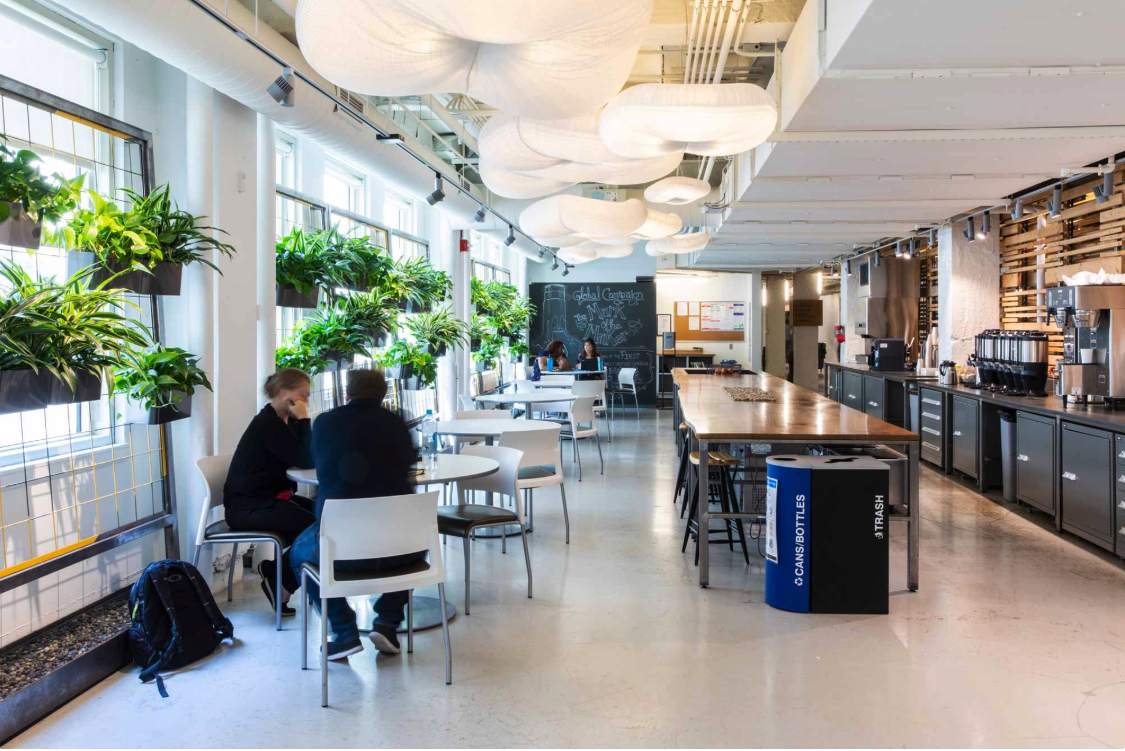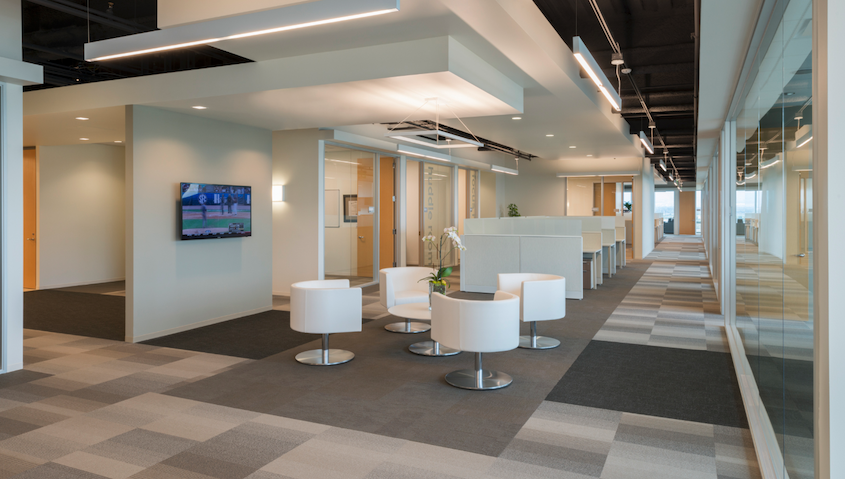5 Real-Life Office Relocation Success Stories


An office relocation is the perfect opportunity for your company to revitalize the workplace and boost morale. But there’s a lot that can go wrong—like an entire truckload of furniture that gets shipped to the wrong location.
The good news is that with proper planning, you can avoid those potential nightmares and have a successful office relocation.
Here are five real-life examples.
5 Office Relocation Success Stories
1. Sodexo
Sodexo’s mission is to deliver quality of life services for a variety of industries, including office designs for corporate environments. Sodexo’s leaders have seen a trend in recent years toward adopting activity-based working designs, but some of their own offices were dated and uninspiring.
With the lease on their old office in Stockholm, Sweden, expiring, Sodexo’s leaders decided to implement a modern office design in their new location.
The office relocation took well over two years of planning and a few weeks worth of heavy lifting. It wasn’t easy, but it was well worth the effort. Since implementing a new workplace design, Sodexo has reduced total space in that office by 1,300 square feet while adding 70 workspaces. They’ve also increased employees’ perceived efficiency by 94 percent (based on employee surveys) and improved employee satisfaction from 77 percent to 93 percent.
Why The Office Relocation Was Successful
One of the biggest concerns was that eliminating assigned seats would make it difficult for managers to oversee their teams. Recognizing the importance of supporting department managers through the transition, Sodexo’s leadership created a standard training program for management and new hires. Using the iOFFICE Hummingbird workplace app allows them to find colleagues and reserve space at a moment’s notice, which has made the transition easier. It also reduced the need for long status meetings.
2. Beam Suntory

(Source)
As a worldwide leader in premium spirits, Beam Suntory prides itself on its ability to create human connections. Inspired by the Japanese concept of gemba, which Senior VP and Global Chief Human Resources Officer Paula Erickson defines as “being where the action is,” Beam Suntory executives decided to move from the Chicago suburb of Deerfield directly into the heart of downtown Chicago. Business leaders wanted the workforce to be in the heart of where the trends were happening and be able to talk to the bartenders and the customers, Erickson said in an HR Executive article.
The new Beam Suntory office takes advantage of natural light and greenery to create an innovative workplace fueled by collaboration. The move also provided an opportunity for the company to refresh other aspects of the business, including offering more flexible remote work options and job-sharing. The office relocation was undoubtedly a success, as more than 99 percent of the 550-person workforce stayed onboard following the move.
Why the Office Relocation Was Successful
The company’s leadership was committed to transparency throughout the process.
They hosted a series of company-wide town hall meetings where employees could speak with executives directly about the move. Leaders replied honestly and weren’t afraid to admit when they didn’t have an answer .
“We did not hold anything back because we didn’t want there to be any rumors,” Erickson said.
It also helped that the new office location was in a trendy neighborhood and came with amenities like state-of-the-art work stations and treadmills.
3. Sephora

One of the values beauty retailer Sephora prides itself on is its dedication to innovation. The company’s revolutionary “assisted self-service” business model sets it apart from other retailers by allowing consumers to sample products in the store prior to purchase. And with the launch of its mobile app, Sephora gives customers the power to do a virtual makeover without leaving the house.
So when the company began preparing for a massive 400-employee office relocation, Edgar Sanchez, the manager of corporate facilities, applied the same kind of “try before you buy” strategy to the planning. He used iOFFICE’s move management software to plan and execute every phase of the move.
Why the Office Relocation Was Successful
Prior to implementing iOFFICE, Sanchez used to manage every move with a combination of different solutions that weren’t designed for that purpose and didn’t integrate with each other. As a result, moves took up to three months to finish.
Once Sephora invested in move management software, Sanchez had the ability to use digital floor plans with real-time occupancy data to create move scenarios before relocating a single chair. He could easily integrate the software with Sephora’s other business solutions too. This shortened the total move planning time to a single week—a more than 90 percent reduction.
4. Polycom

(Source)
Telecommunication and collaboration technology company Polycom began a massive rebranding effort. Its goal was to demonstrate that its products were just as innovative as those offered by tech giants like Skype and Cisco. As part of this rebranding, the executive team decided to relocate the company’s headquarters from Pleasanton, California to San Jose in the heart of Silicon Valley.
Like Beam Suntory’s office relocation, Polycom’s move was a relatively short distance — less than 40 miles. But because of the considerable traffic between Alameda County and Silicon Valley, it added at least three hours to many employees’ commutes. That meant the success of Polycom’s office relocation was especially dependent on helping employees overcome resistance to change.
Why the Office Relocation Was Successful
The biggest reason why people resist change is that they overestimate what they’re giving up and underestimate what they’ll gain in return.
Following the initial announcement, then-VP of Talent Management Daniel Sonsino hosted one-on-ones with employees to discuss the relocation, according to a SHRM article. He invited them to voice their concerns so they could work together to address and resolve them.
Not only did Polycom’s leaders ensure communication about the move was clear and consistent, but they also invited employees to share what features and design elements they wanted to see at the new headquarters. These included a state-of-the-art fitness center and plenty of huddle rooms — both of which the Polycom executive team made sure were part of the new offices. The company also provided a free shuttle service for employees to use to help lessen the burden of the commute.
5. Organic Valley

(Source)
Originally a small group of family farms, Organic Valley is now America’s largest farmer-owned organic cooperative. Based in La Farge, Wisconsin, it’s also one of the world’s largest organic consumer brands, with annual sales over $1 billion.
Thanks to spectacular growth, the company built a new 400-person facility to be the second headquarters. When it came time to plan the move, the Organic Valley workplace services team decided their current process of using sticky notes and a whiteboard to create move scenarios wouldn’t cut it. So, like Sephora, they implemented move management software.
Why the Office Relocation Was Successful
Unlike Microsoft Visio (which Organic Valley had previously been using to manage floor plans), the move management solution allowed the workplace services team to visualize various potential layouts. This was especially important because while the building accommodated 400 people, only about 260 would be relocated, meaning the team needed to account for future employees and assets.
Thanks to the software, the time commitment for move scenarios dropped from several days to a matter of hours. And following the development of a solid move plan, the relocation of more than 250 employees from multiple other buildings nearby to a single office went off without a hitch.
Planning A Successful Office Relocation
Whether your company is considering a cross-country move or you just want to rearrange your current workplace to make better use of the space, the two most important aspects are planning and communication. Move management software helps you plan moves efficiently and execute them seamlessly.
You can create move scenarios with drag-and-drop functionality, create service tickets for tasks related to the move and keep everyone updated with email notifications.
Want to see our move management software in action? Schedule a free demo today.
